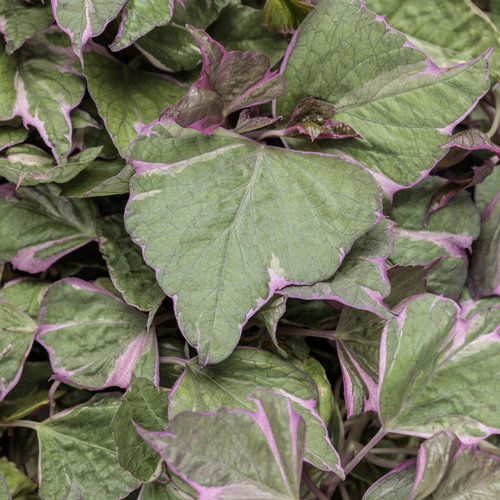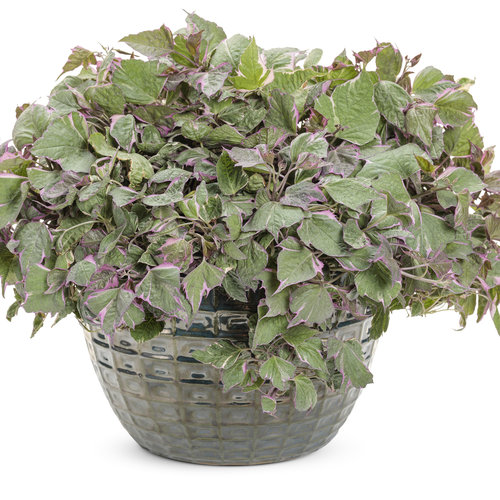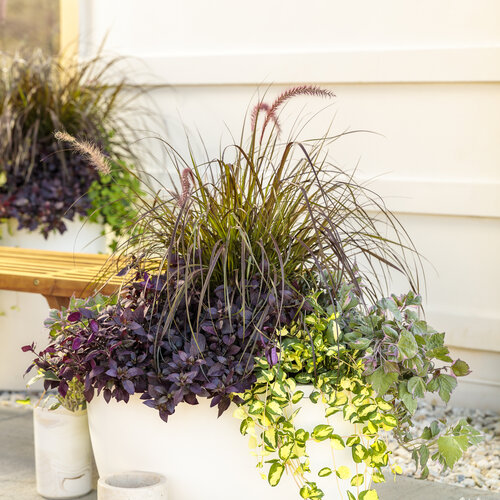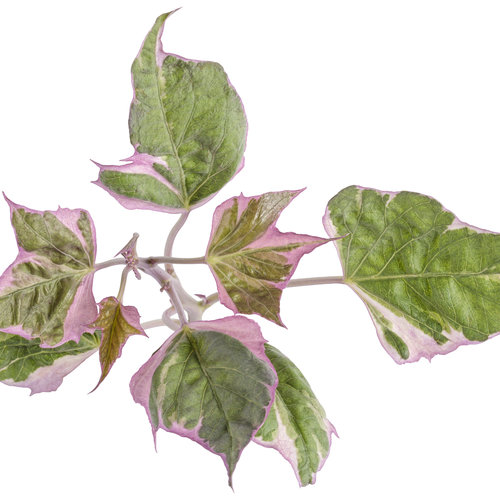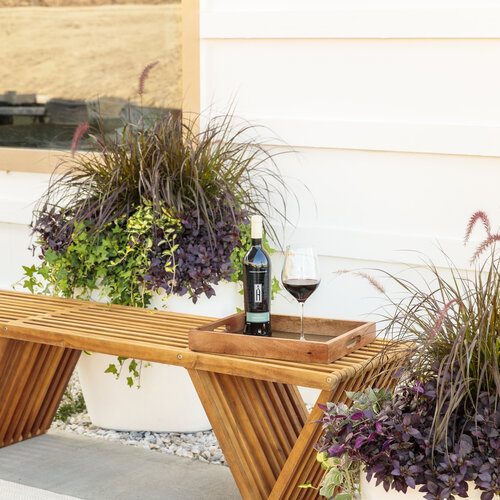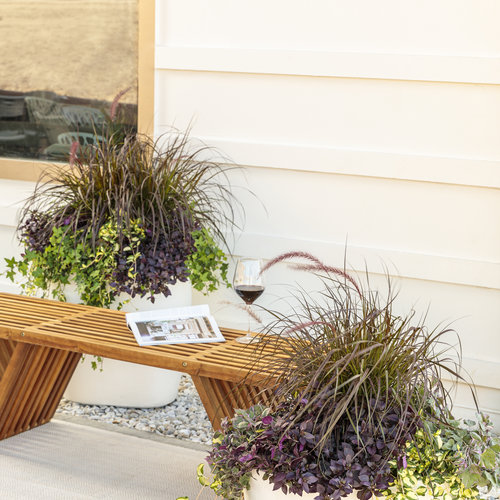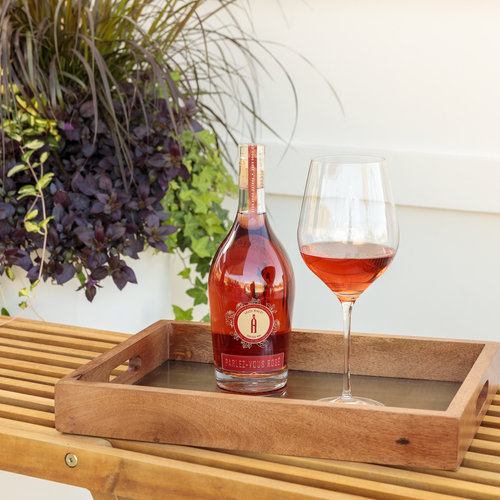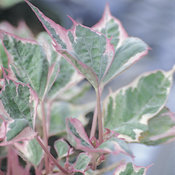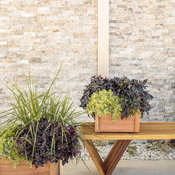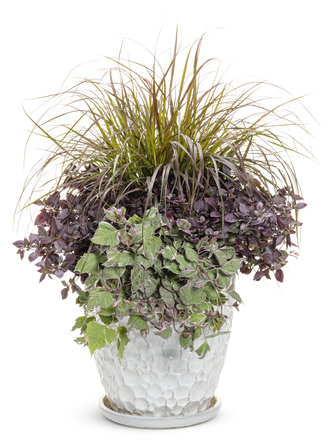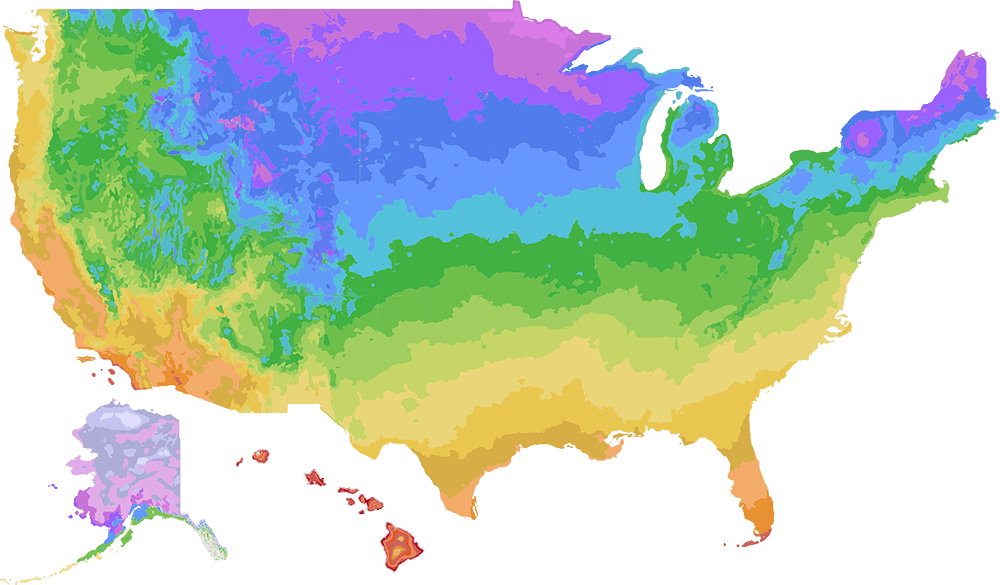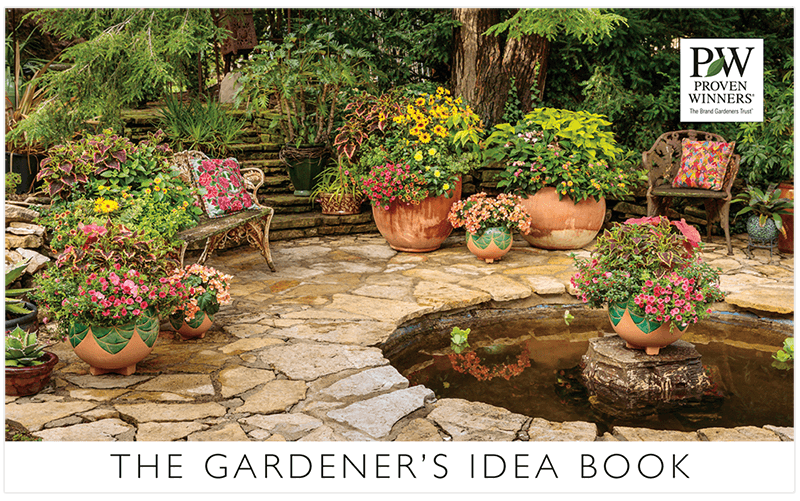Zone 5/6 Michigan. Humid with summer heat mid 80's to mid 90's Planted In Self-watering container Grown in full bright shade. At first, I didn't think much of this vine. It was slow to take and I kind of wrote it off. But boy was I wrong, so happy I didn't pull it. The container sits about 3-3.5 feet off the ground and I have had to trim it 4 times since July. The colors really add to the whole burgundy, chartreuse, silver, and white theme in the planter, It pulls everything together. It is very full and lush all the way to the ground. Even with its fullness, it gives a delicate texture to the arrangement. I have also added cuttings to floral arrangements in the home. I will be looking for this one again next spring.
Tricolor Sweet Potato Vine Ipomoea batatas
- Part Sun to Sun
- Spring
- Summer
-
Details
4 - 8 Inches24 - 36 Inches24 - 36 Inches10cm - 20cm61cm - 91cm61cm - 91cmFeatures
Wonderful tricolored leaves on trailing growth
Award WinnerFoliage InterestHeat TolerantDeadheading Not NecessaryCharacteristics
Plant Type:AnnualHeight Category:ShortGarden Height:4 - 8 Inches 10cm - 20cmTrails Up To:72 Inches 1.8mSpacing:24 - 36 Inches 61cm - 91cmSpread:24 - 36 Inches 61cm - 91cmFlower Shade:NoneFoliage Colors:GreenFoliage Colors:PinkFoliage Colors:WhiteFoliage Shade:MulticoloredHabit:TrailingContainer Role:SpillerPlant Needs
Light Requirement:Part Sun to SunThe optimum amount of sun or shade each plant needs to thrive: Full Sun (6+ hours), Part Sun (4-6 hours), Full Shade (up to 4 hours).
Maintenance Category:EasyBloom Time:Grown for FoliageHardiness Zones:11a, 11bWater Category:AverageUses:ContainerUses:LandscapeUses Notes:Use in hanging baskets, beds, borders and window boxes
Maintenance Notes:Ipomoeas are great additions to combination planters, but they can sometimes overwhelm less vigorous plants. If you are like me you can let your combination plants duke it out Darwinian style, however, if you prefer to keep a more balanced look to your combination planters, you can cut back or remove stems at any time.
Ipomoeas also make great annual groundcovers in the landscape. They love the heat and humidity (growing up to 36" a week in the Deep South), cooler temperatures and low humidity cause them to stay more compact.
While Sweet Potatoes all come from the same parent material out of Southeast Asia, there is a big difference between the Sweet Potato you buy in the store and the tubers produced. Commercial sweet potatoes have been bred for over 100 years selecting for those with the best sugar to starch content (hence the name SWEET Potato), the ornamental have been bred to produce good leaves and no tubers, though they do form, they are composed of almost pure starch and no sugar; making them a poor choice for eating. So yes you can eat the tubers, but don't expect anyone to come back for seconds! Also always be careful when eating any ornamental plant unless you know how it was grown, and if pesticides or fungicides were used on it before you got it; a tuber is a storage root, and yes they store chemical as well as starch.
An application of fertilizer or compost on garden beds and regular fertilization of plants in pots will help ensure the best possible performance.
"A Real Simple magazine Top 10 goofproof Plant"
-
8 Reviews
-
4 Awards
-
8 Recipes




